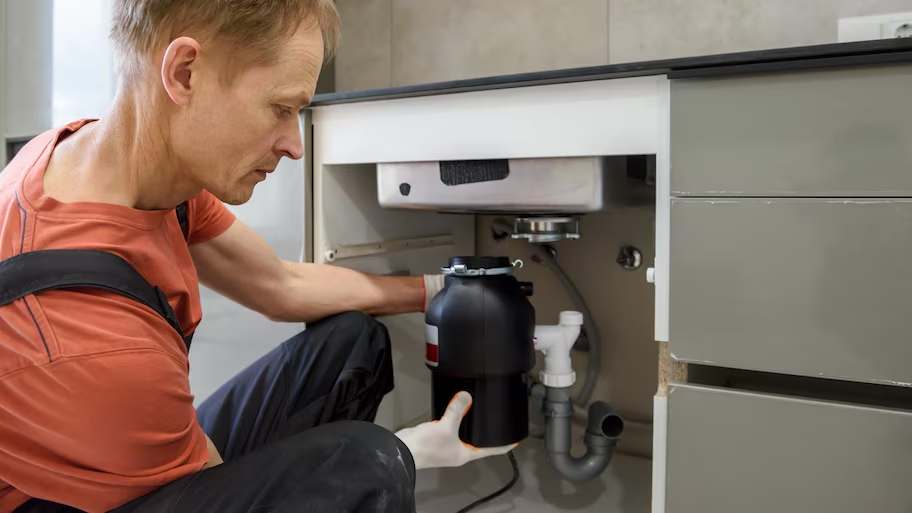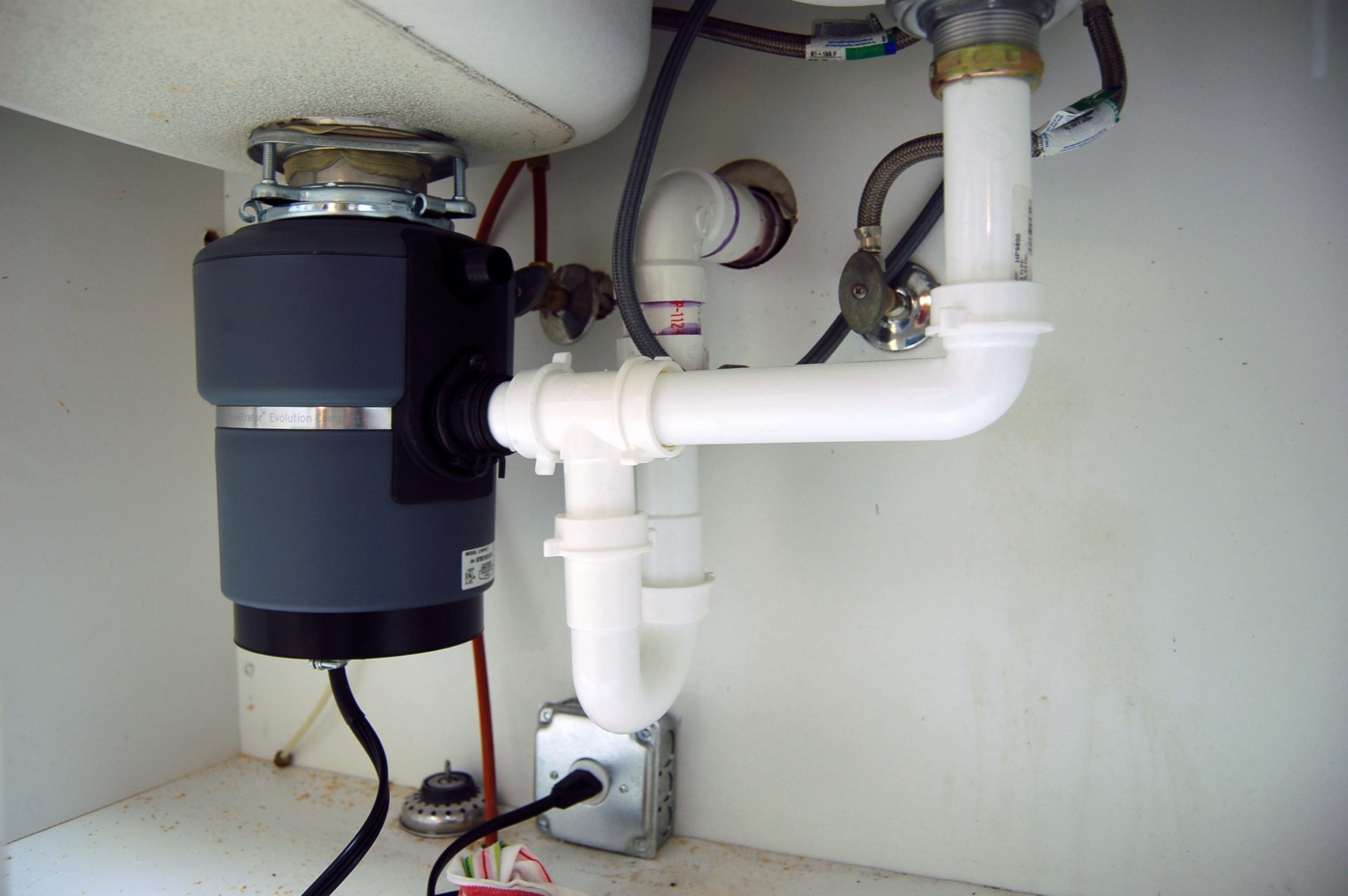Step-by-Step Techniques for Repairing a Leaky Garbage Disposal
Step-by-Step Techniques for Repairing a Leaky Garbage Disposal
Blog Article
They are making a few good observations on Why Is My Garbage Disposal Leaking From the Bottom? as a whole in this content below.

Waste disposal unit are necessary kitchen area devices that assist in taking care of food waste effectively. However, a dripping garbage disposal can be a discouraging and messy issue to manage. Luckily, lots of leakages can be repaired quickly with a couple of simple steps. In this post, we will certainly review how to repair a leaking garbage disposal efficiently.
Introduction
Garbage disposals are set up under kitchen area sinks and are created to shred food waste right into smaller sized pieces, enabling it to go through the plumbing system quickly. While these gadgets are normally trustworthy, leaks can occur over time due to wear and tear, loosened connections, or damage to the device.
Step-by-Step Guide to Dealing With a Dripping Garbage Disposal
Turn Off the Power
Before attempting any repairs, make sure that the power to the garbage disposal device is shut off to avoid the risk of electrical shock.
Find the Leakage
Recognize the exact place of the leakage and establish the cause
Tighten Links
Make use of a wrench to tighten up any kind of loosened connections between the disposal unit and the plumbing system.
Replace Seals or Gaskets
If the leakage is because of used seals or gaskets, get rid of the old parts and change them with brand-new ones.
Patching Fractures or Openings
For fractures or openings in the disposal device, use epoxy or a suitable patching product to secure the damaged area.
Determining the Resource of the Leakage
Prior to trying to deal with a leaking garbage disposal, it is essential to identify the source of the leakage. This can generally be done through visual inspection or by performing straightforward examinations.
Visual Assessment
Examine the garbage disposal device meticulously for any type of indications of water leakage. Pay attention to areas around seals, gaskets, and connection factors.
Evaluating for Leaks
One method to examine for leaks is by running water through the disposal system and checking for any kind of visible indicators of leakage.
Usual Reasons For Leakages in Trash Disposals
Worn Seals and Gaskets
Seals and gaskets play a crucial function in preventing water from leaking out of the waste disposal unit. In time, these parts can deteriorate, resulting in leaks around the disposal system.
Loose Links
The links in between the garbage disposal and the plumbing system can end up being loosened with time, creating water to leakage out throughout procedure.
Cracks or Openings in the Disposal Device
Physical damages to the waste disposal unit, such as splits or openings in the real estate, can also result in leaks.
Devices and Products Needed for Taking Care Of a Dripping Garbage Disposal
Before beginning the fixing procedure, gather the required tools and products, including a screwdriver, flexible wrench, plumbing technician's putty, substitute seals or gaskets, and epoxy or patching material for fixing splits or holes.
Testing the Garbage Disposal After Repair Work
When the fixing is total, examine the waste disposal unit by running water with it to make sure that the leak has actually been dealt with.
Preventive Maintenance Tips to Avoid Future Leaks
To avoid future leakages, it is important to carry out normal maintenance on your waste disposal unit. This consists of maintaining it clean, staying clear of placing non-food items or tough items down the disposal, and periodically looking for leaks or various other problems.
Conclusion
In conclusion, dealing with a leaking waste disposal unit is a fairly uncomplicated process that can be finished with basic devices and products. By complying with the actions described in this write-up and practicing precautionary upkeep, you can keep your garbage disposal in good working problem and avoid pricey repair services in the future.
What to Do About a Leaking Garbage Disposal
A leaking garbage disposal often goes unnoticed until you confront a sopping cabinet, a foul-smelling puddle, or an audible drip-drip-drip from the unit. The fix can be frustrating, too, because the leak can stem from a number of components in the system. Fortunately, with a little sleuthing, you can zero in on the leak and—depending on the exact location—stop the icky oozing and repair the component that caused it. Worst case scenario, if it turns out that the garbage disposal must be replaced, installing a new one is a reasonable do-it-yourself task for those with basic plumbing skills. Read on to keep the cash you’d otherwise hand over to a pro.
Prepare to find the leak
Prior to testing the garbage disposal for leaks, unplug it at the wall outlet and turn off the power from the breaker box to prevent electrical shock. Then insert a watertight sink stopper into your sink drain and wipe the unit dry with a clean cloth. In any handy container, mix a few drops of food coloring into a few cups of water, and pour the dyed water onto the sink stopper to help you locate the leak.
Investigate the source
the top, where the disposal meets the sink drain the side, where the dishwasher hose or main drain pipe connects to the disposal or the bottom of the unit Inspect each of these locations while gliding a light-colored rag over the unit; the dyed water will readily show on the rag and reveal the location of the leak. If a leak isn’t immediately apparent, remove the sink stopper and pour a few more cups of dyed water down the sink drain, then check for leaks again. Leaks near the top of the unit are more likely to show themselves while the sink is plugged, while side and bottom leaks are more noticeable while the sink is unplugged.
The metal sink flange that sits directly inside the sink drain is typically sealed around the top with plumber’s putty (a clay-like sealant) and then secured from under the sink with bolts. If the plumber’s putty deteriorates, or the bolts loosen, the flange can no longer form a watertight seal between the sink drain and the disposal—which could cause a leak at the top of the unit.
To reseal the leaky flange, you must first detach the garbage disposal. Start by loosening the screws securing the main drain pipe to the disposal, then loosen the screws in the metal clamp securing the dishwasher hose to the disposal and detach the drain pipe and dishwasher hose from the disposal. Loosen the screws in the mounting ring that connects the disposal to the metal mounting assembly beneath the sink, then pull down the disposal and carefully set it on a clean, dry surface. Loosen the bolts in the mounting assembly with a wrench, then pull down the mounting assembly and set it near the disposal.

We had been shown that article on Why Is My Garbage Disposal Leaking From the Bottom? through a friend on a different blog. Sharing is nice. One never knows, you might be doing someone a favor. We value reading our article about Tips on Fixing a Leaking Garbage Disposal.
This Site Report this page